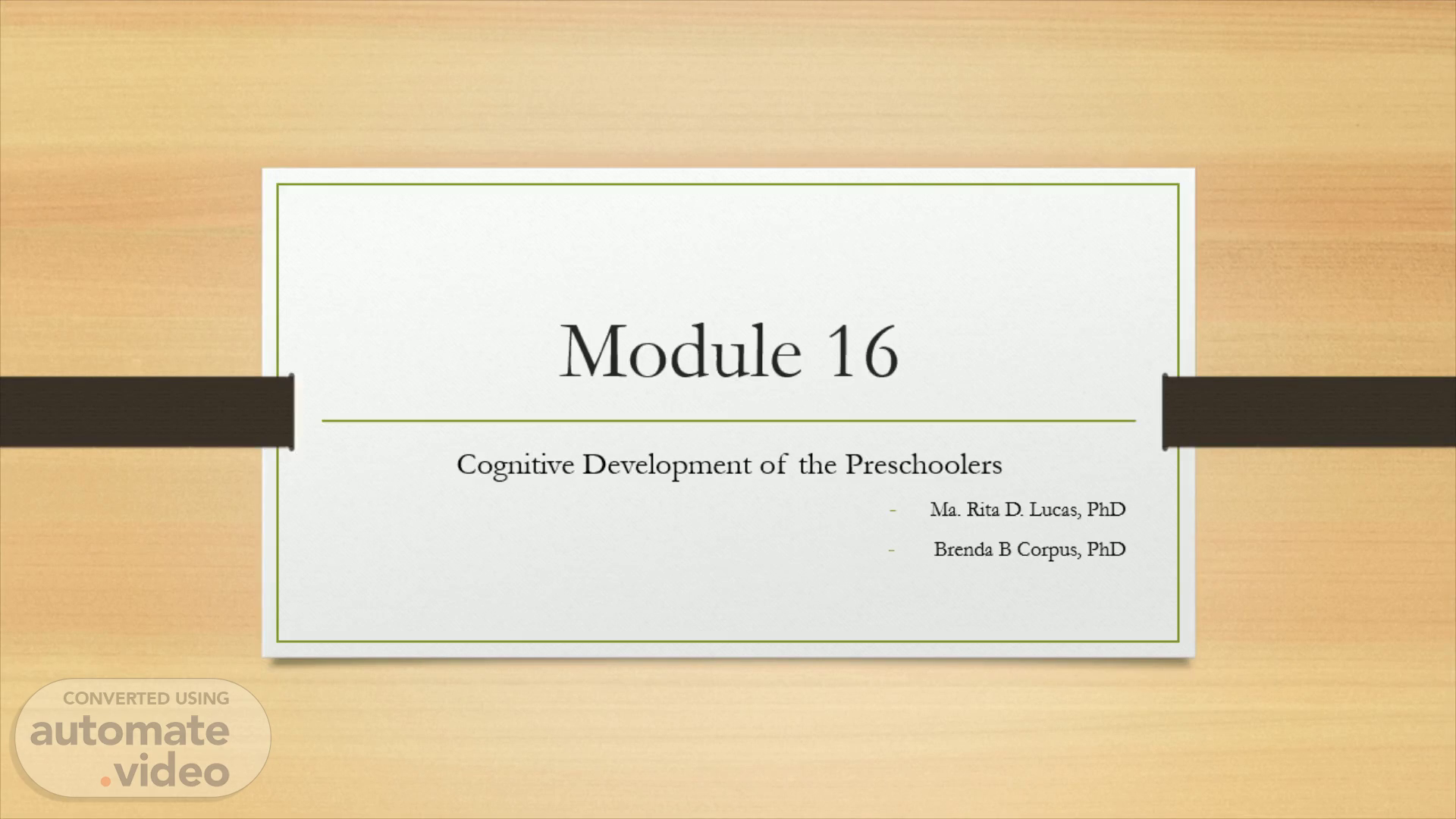Scene 1 (0s)
Module 16. Cognitive Development of the Preschoolers Ma. Rita D. Lucas, PhD Brenda B Corpus, PhD.
Scene 2 (4s)
Preschoolers’ Symbolic and Intuitive Thinking. There are two (2) substages of Piaget’s preoperational thought, namely : Symbolic Substage – preschool children show progress in their cognitive abilities by being able to draw objects that are not present, by their dramatic increase in their language and make-believe play. Intuitive Substage – preschool children begin to use primitive reasoning and ask a litany questions..
Scene 3 (1m 33s)
Preschoolers’ Symbolic and Intuitive Thinking. Items # 1 (someone switched on the thunder) and # 3 (that tree pushed the leaf off and it fell down.) Item # 2, “child silently nods on the telephone as to answer his father who is on the other side of phone inquiring if Mom is around.” is another limitation in preschool children’s symbolic thought..
Scene 4 (3m 1s)
Preschoolers’ Symbolic and Intuitive Thinking. Item # 4, should apply to preschool children had the child answer NO when asked if the amount of liquid in the tall, thin beaker was equal to that which remained in the original beakers. - This is also referred to as unidimensional thought . This is also an evidence of preschool children’s lack of conservation . Item # 6 and # 7 have something to do with preschool children’s attention. Between items #6 and 7, item #6 (strongly influenced by the features of the task that stands out, such as the flashy, attractive clown) applies to preschool children..
Scene 5 (5m 23s)
Item # 8 (child does not realize that the juice in each glass can be poured back into the juice box from which it came). Indicates irreversibility , Piaget’s term for a preoperational child’s failure to understand that an operation can go in two or more directions. Item # 9 (Mike did not like to share a piece of cake with his younger sister Mike’s younger sister was sick. Mike concludes that he made his younger sister got sick) This is transductive reasoning ..
Scene 6 (8m 8s)
Preschoolers’ Symbolic and Intuitive Thinking. Brain Connections in the Preschool Years Because of fascinating developments in neuroscience, brain development of young children have been of great interest to the field of early childhood. Neurons – brain composed of numerous cells that connect to each other to function. Synapses – Cell connections, sometimes also referred to as synaptic connections ..
Scene 7 (9m 8s)
Language Development. Young children’s understanding sometimes gets ahead of their speech. As children go through early childhood, their grasp of the rules of language increases (morphology, semantics, pragmatics). Symbolic thinking involves language, literacy and dramatic play. Children rapidly conclude that sounds link together to make words and words represent ideas, people, and things. Throughout the pre school years, children’s language development becomes increasingly complex..
Scene 8 (10m 3s)
Language and social interaction. Vygotsky believe that young children use language both to communicate socially and to plan, guide and monitor their behavior in a self-regulatory fashion – called inner speech or private speech (Santrock, 2002). Vygotsky introduced the term Zone of Proximal Development (ZPD) to refer to tasks too difficult for a child to master alone but can be mastered with the guidance and assistance of adults or more skilled children (Santrock 2002). In short, the ZPD captures the preschool children’s cognitive skills that are in the process of maturing. The ZPD has a lower limit and an upper limit. The lower limit of the ZPD is “the level of cognitive development reached by the preschool child independently. The upper limit is the level of additional responsibility the child can accept with assistance of an able instructor.” (Santrock, 2022)..
Scene 9 (11m 42s)
Four Component of Language. Phonology Semantics Syntax Pragmatics.
Scene 10 (12m 32s)
Domain: Cognitive Development Attention and Activity Level Standards 1: The child is able to sustain attention and modulate this activity at age- expected levels..
Scene 11 (13m 5s)
49-60 months: 4-5 years old • Sustains attention and concentration on a tabletop activity for 15-20mins. 61-71 months: 5-6 years old • Can work on school assignment independently..
